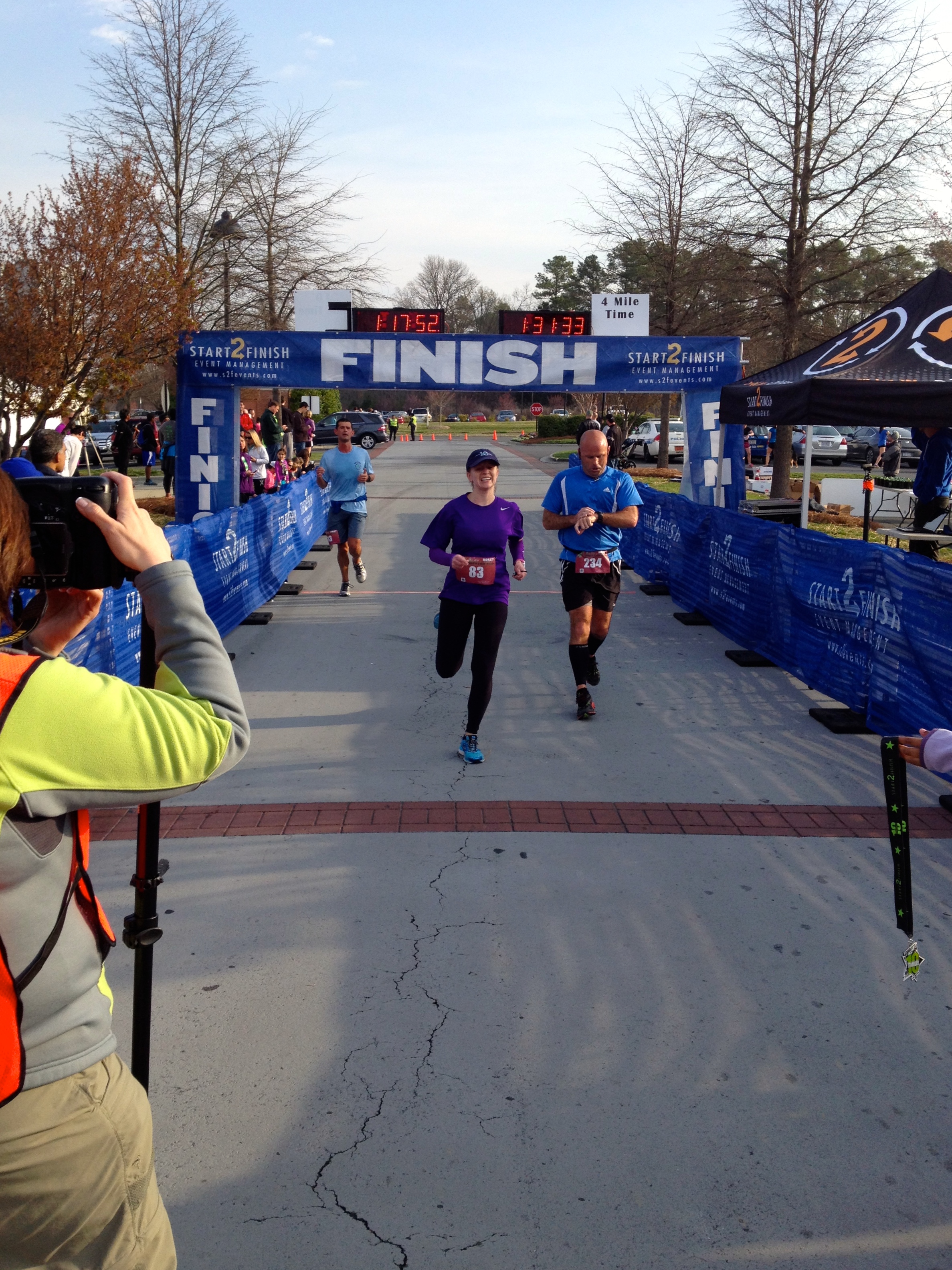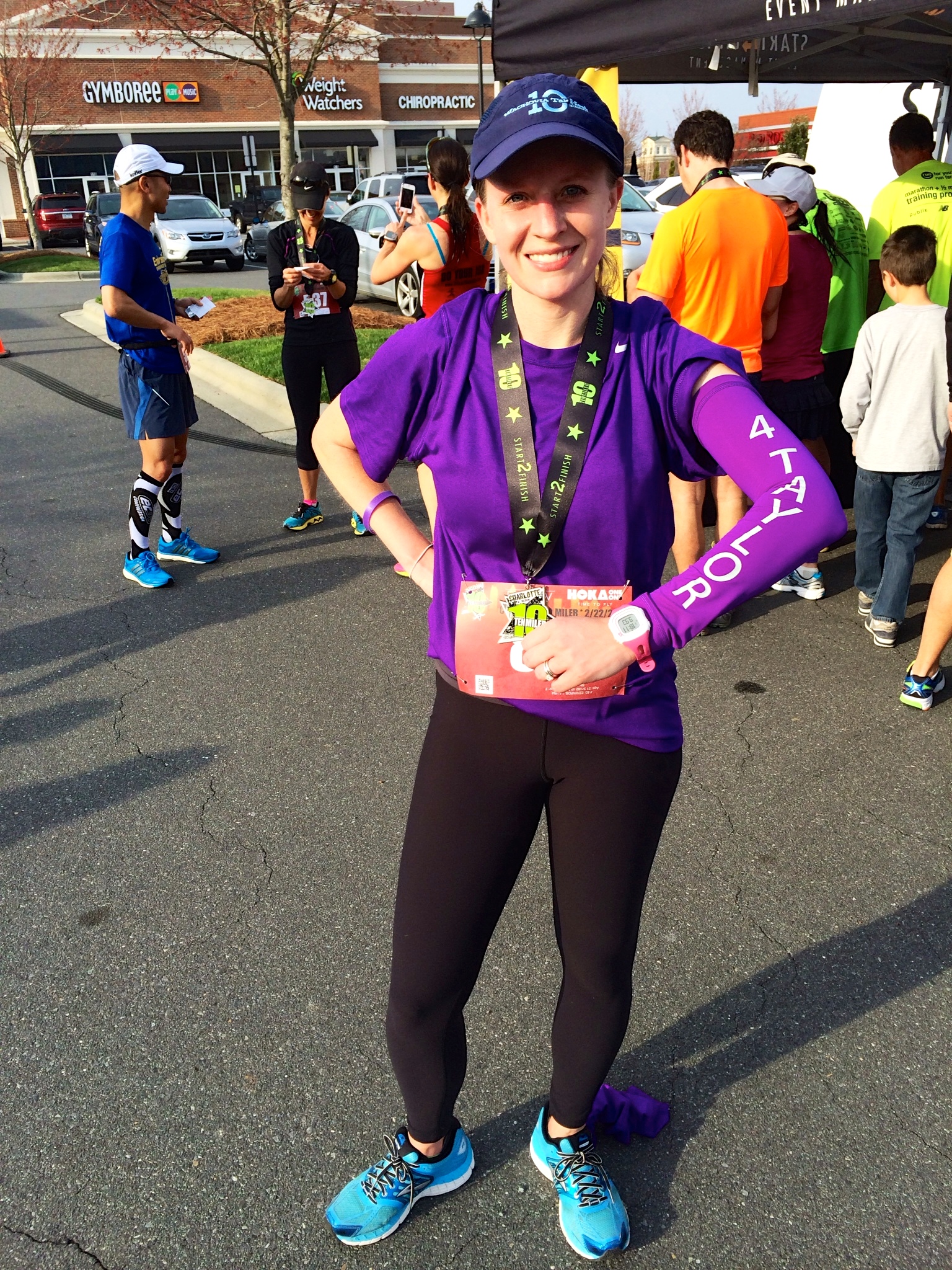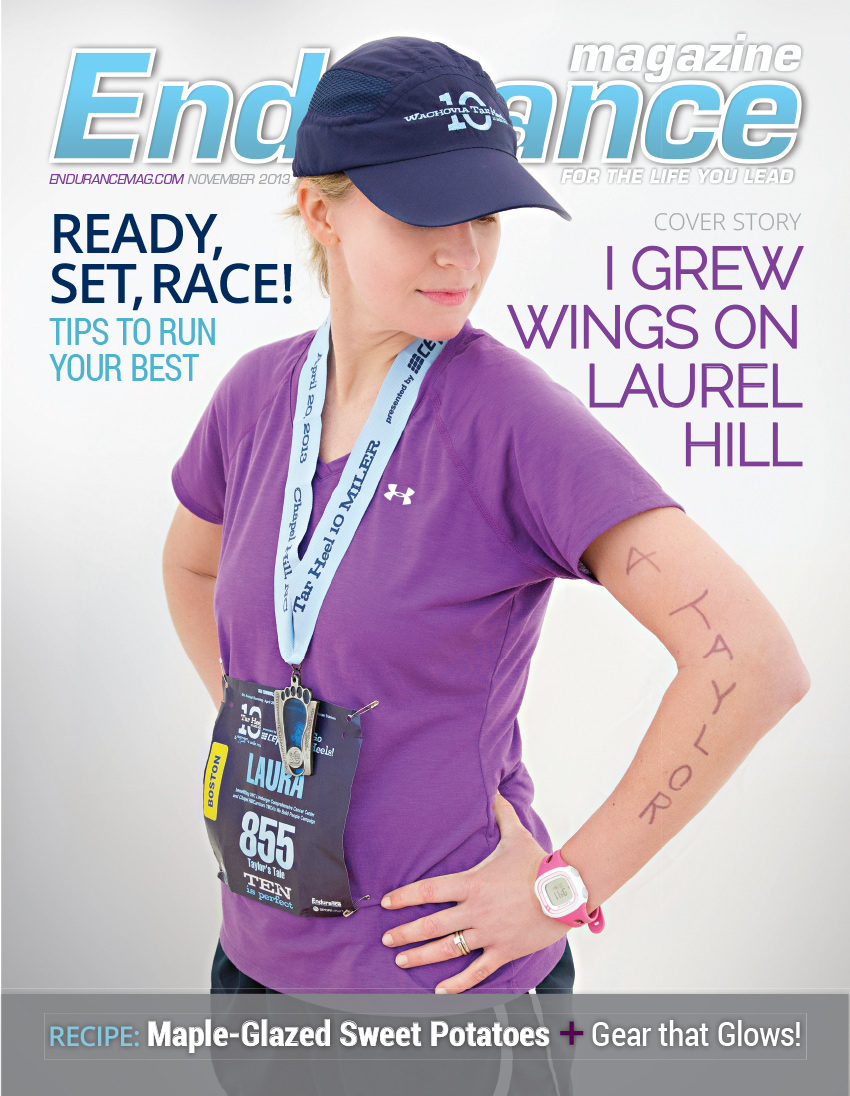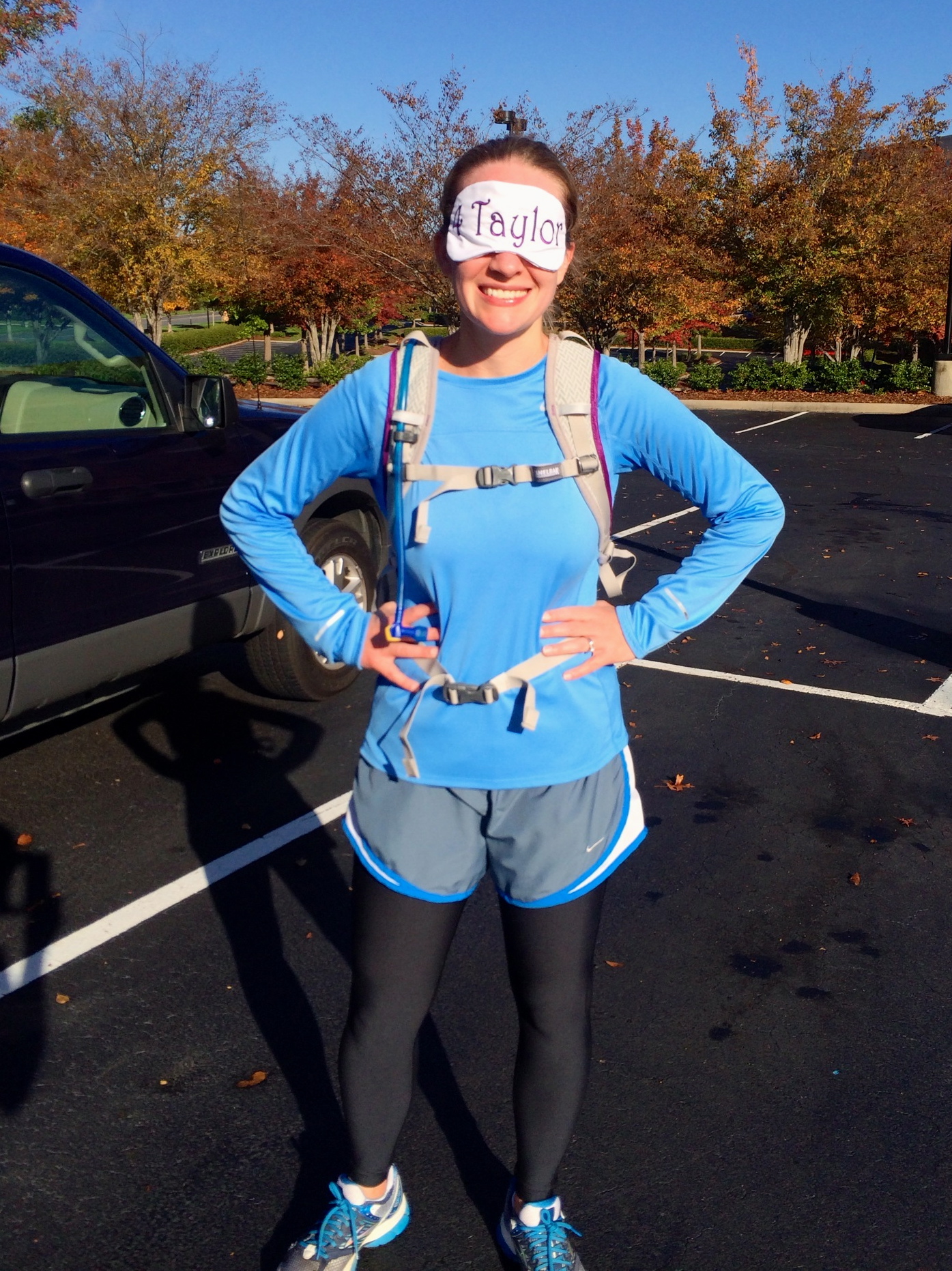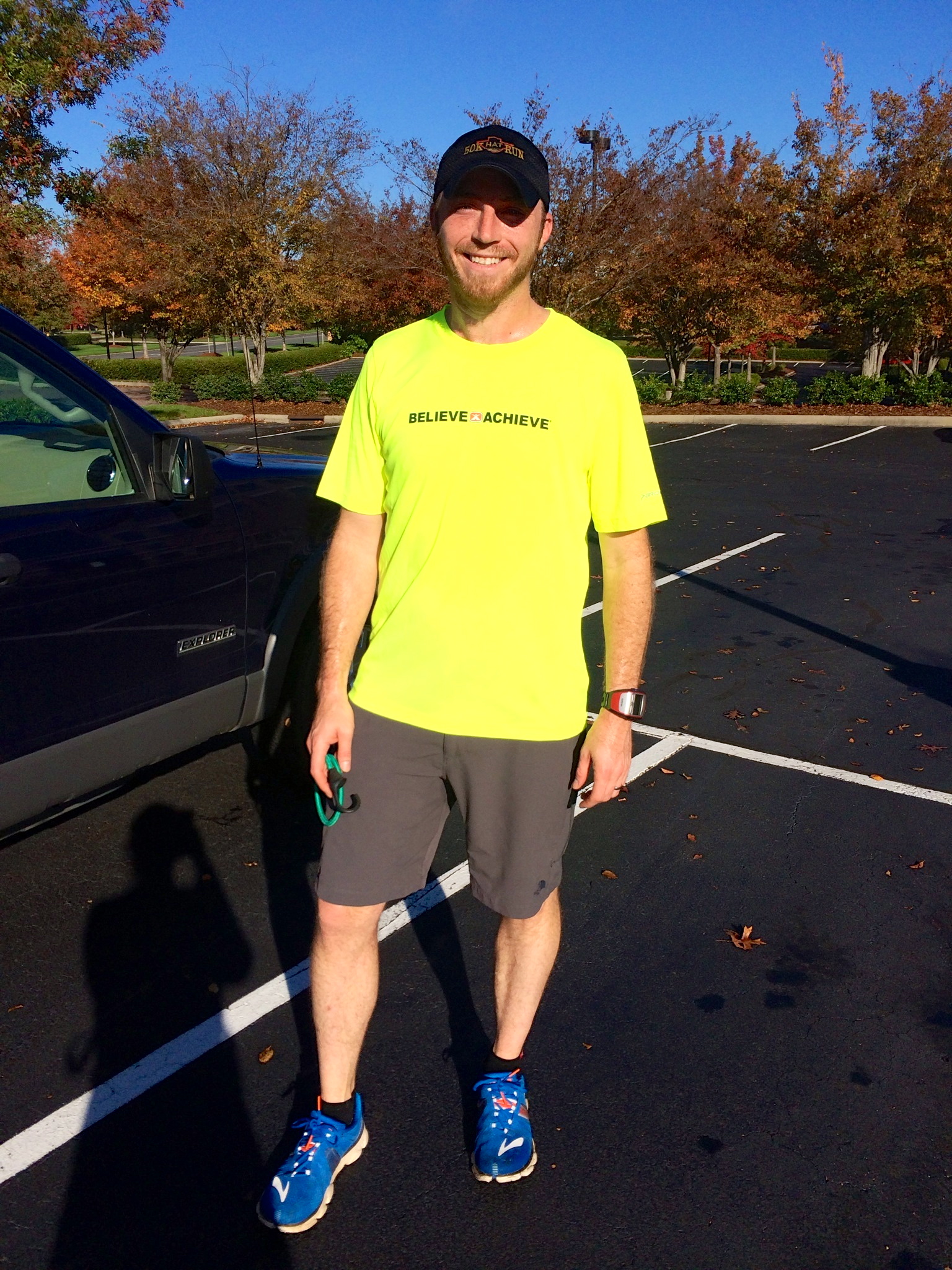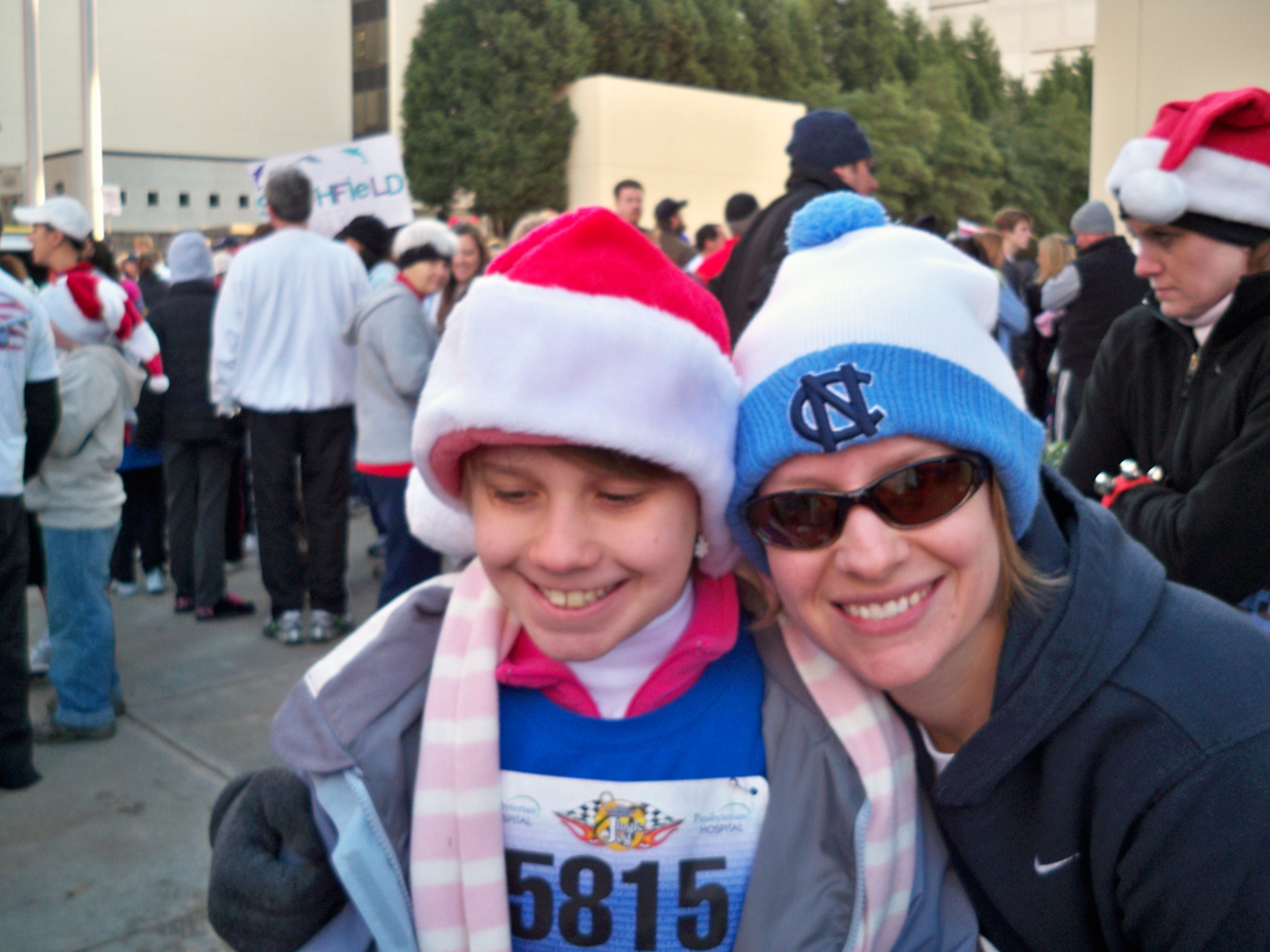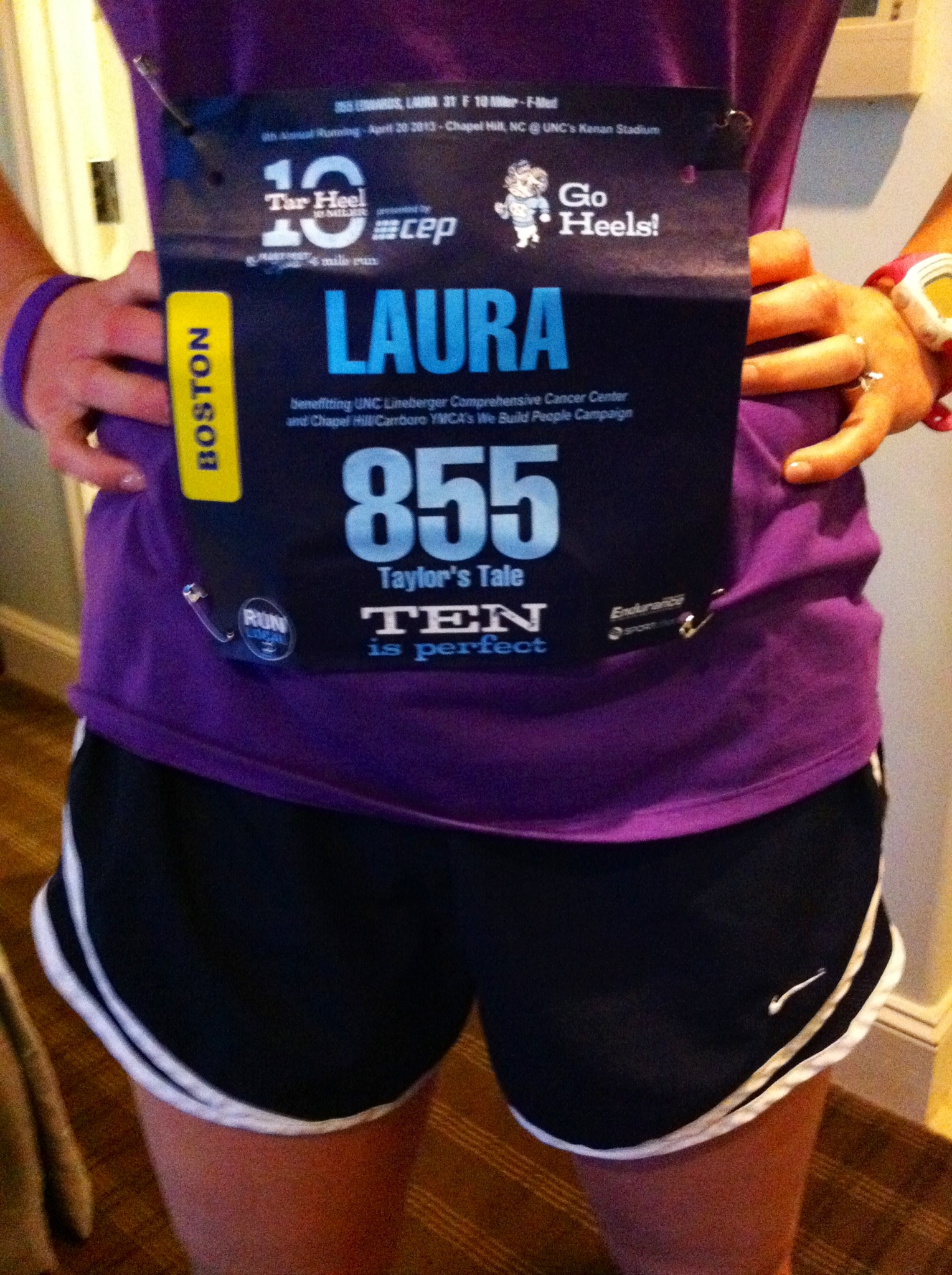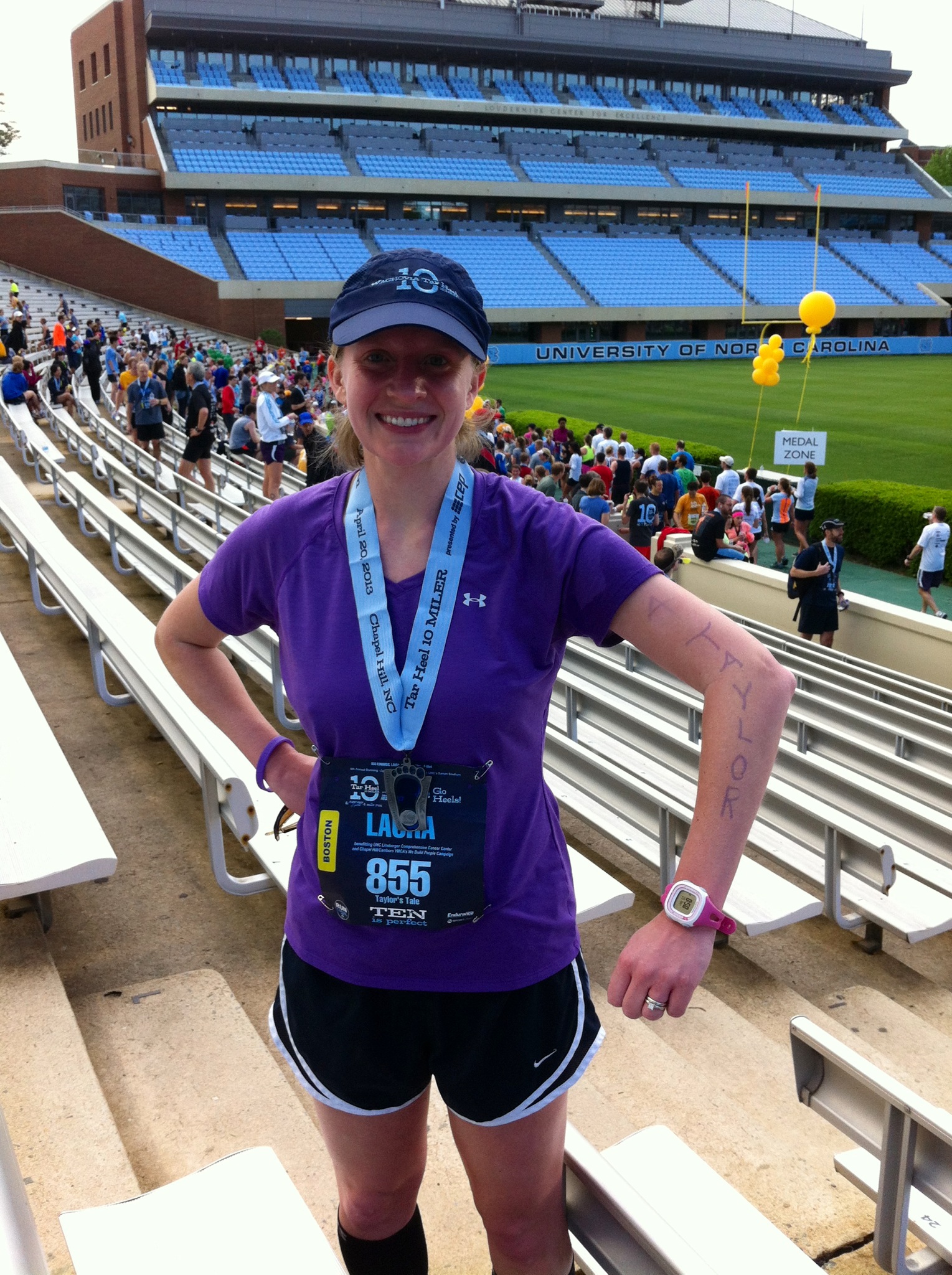I’m traveling for races so much these days, it isn’t often that I have a chance to run in my North Carolina hometown. So I looked forward to running in today’s Charlotte 10 Miler, where I figured to see familiar faces and log a fast time on a familiar course.
But life happened, as it tends to do. I lost my father-in-law on Election Day and moved into a new house on New Year’s Eve. I dove into Taylor’s Tale with a sort of conviction I struggled to muster in the past several years. I stayed busy at the office. Needless to say, my feet haven’t seen much action on these fleeting winter days.
But I had a lot of things to fuel me along the 10-mile course on sleepy neighborhood streets and wooden walkways and tree-lined trails winding through urban wetlands. The Batten disease community lost six children in the past few weeks. My own sister’s stubborn star is fading. And as the morning sun lit up the sky in shades of coral and salmon and goldenrod, I inked not one, but two names, on my arm.
The first was Taylor’s. I’ve been running races for a purpose since I took my first steps at Chapel Hill’s Tar Heel 10 Miler on a spring day in 2009, four months after my blind sister crossed the finish line of her first 5K with her face turned toward heaven.
The second was Bridget’s. Twelve-year-old Bridget Kennicott gained her angel wings on February 15 after a brave battle against late infantile Batten disease. I’ll never forget the first time I met Bridget and her family at a Batten Disease Support and Research Association conference in Chicago. Bridget’s dad, Dave, sat behind me at a research session in one of the hotel’s chilly conference rooms. Bridget looked like a sleeping angel in the stroller beside him. When I twisted in my chair to say hello, she took hold of my finger and didn’t let go.
Something my sister used to do.
A lot happened in the months leading up to the Charlotte 10 Miler. But in this, my first race of 2017, I didn’t think much about the past. Instead, as I weaved through colorful flashes of wicking shirts and race bibs and compression socks on the course this morning, I mostly thought about what I was running toward.
7:51/mile splits. The finish line. The 35-39 age group (my birthday is in 10 days). My next race, in state 16 of 50. Exciting next steps as an author. A trip to D.C. for rare disease meetings on Capitol Hill. A gene therapy clinical trial for children with Batten disease. My sister’s tempered laugh. An evanescent smile. A radiant soul. One brilliant future realized; another extinguished.
Running toward everything.

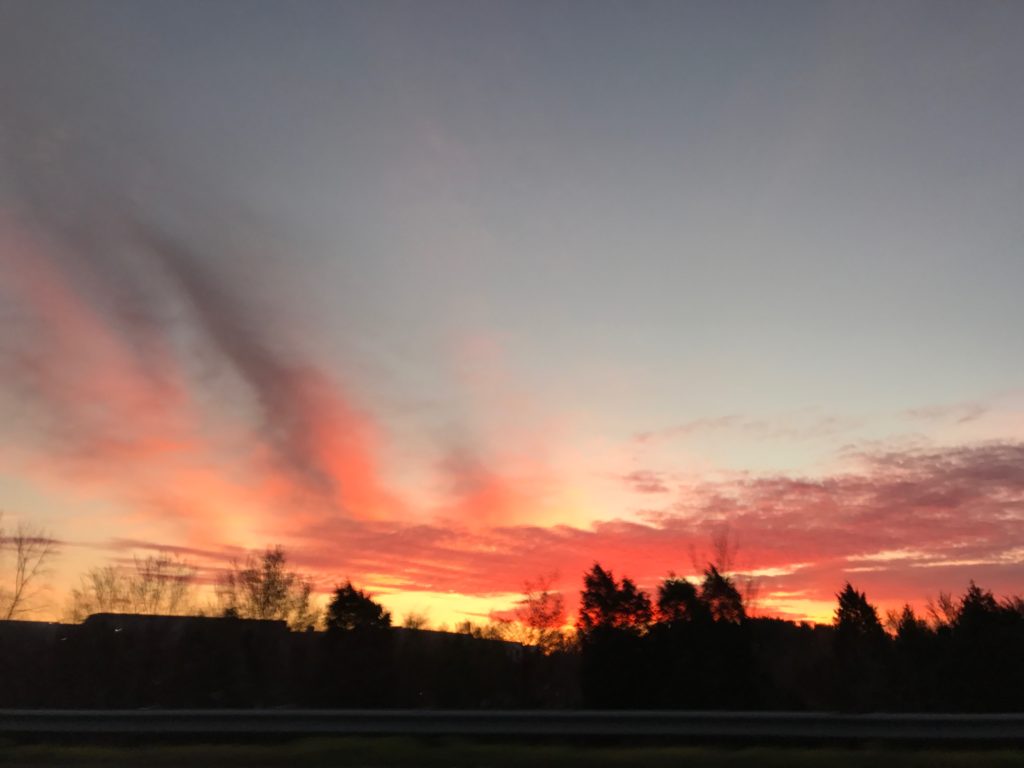
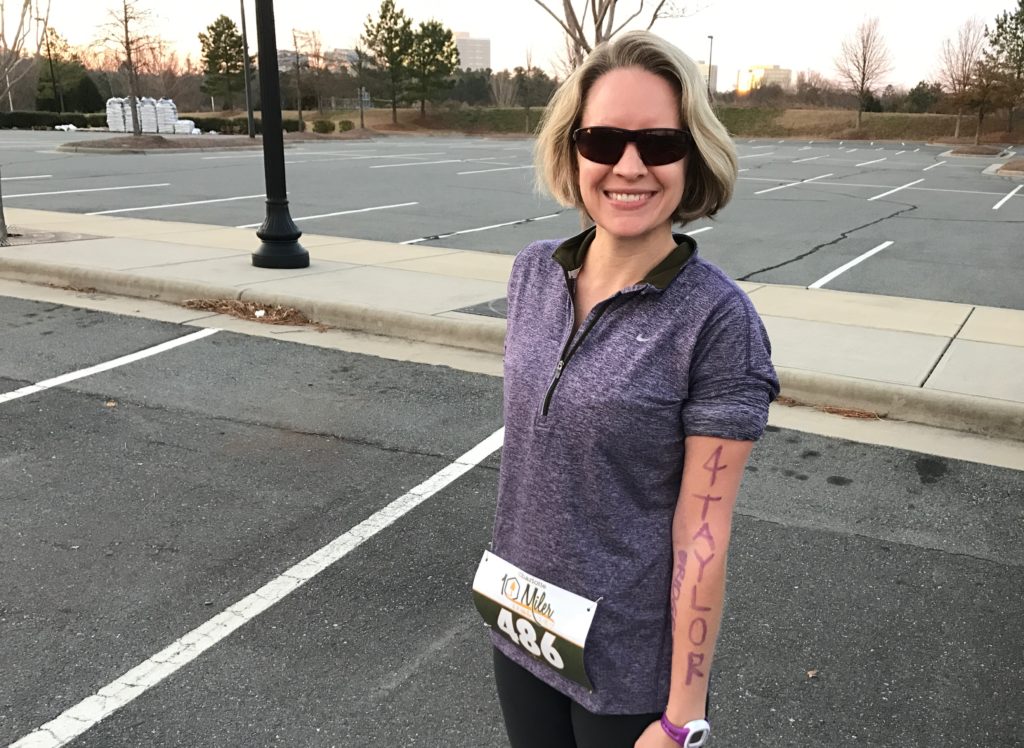
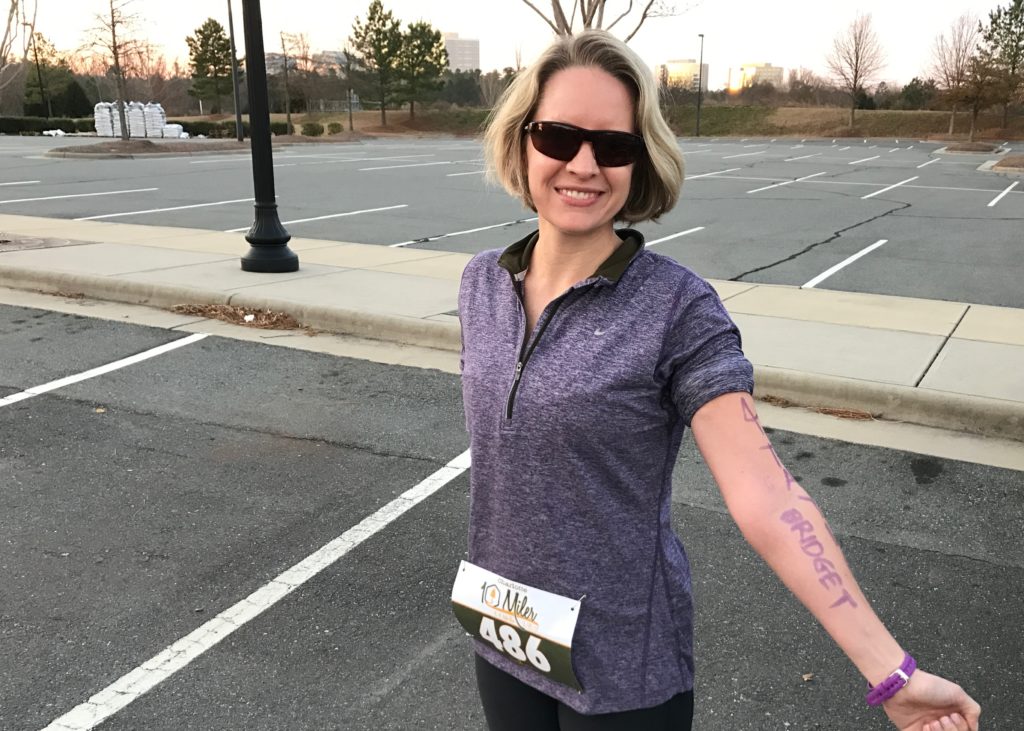
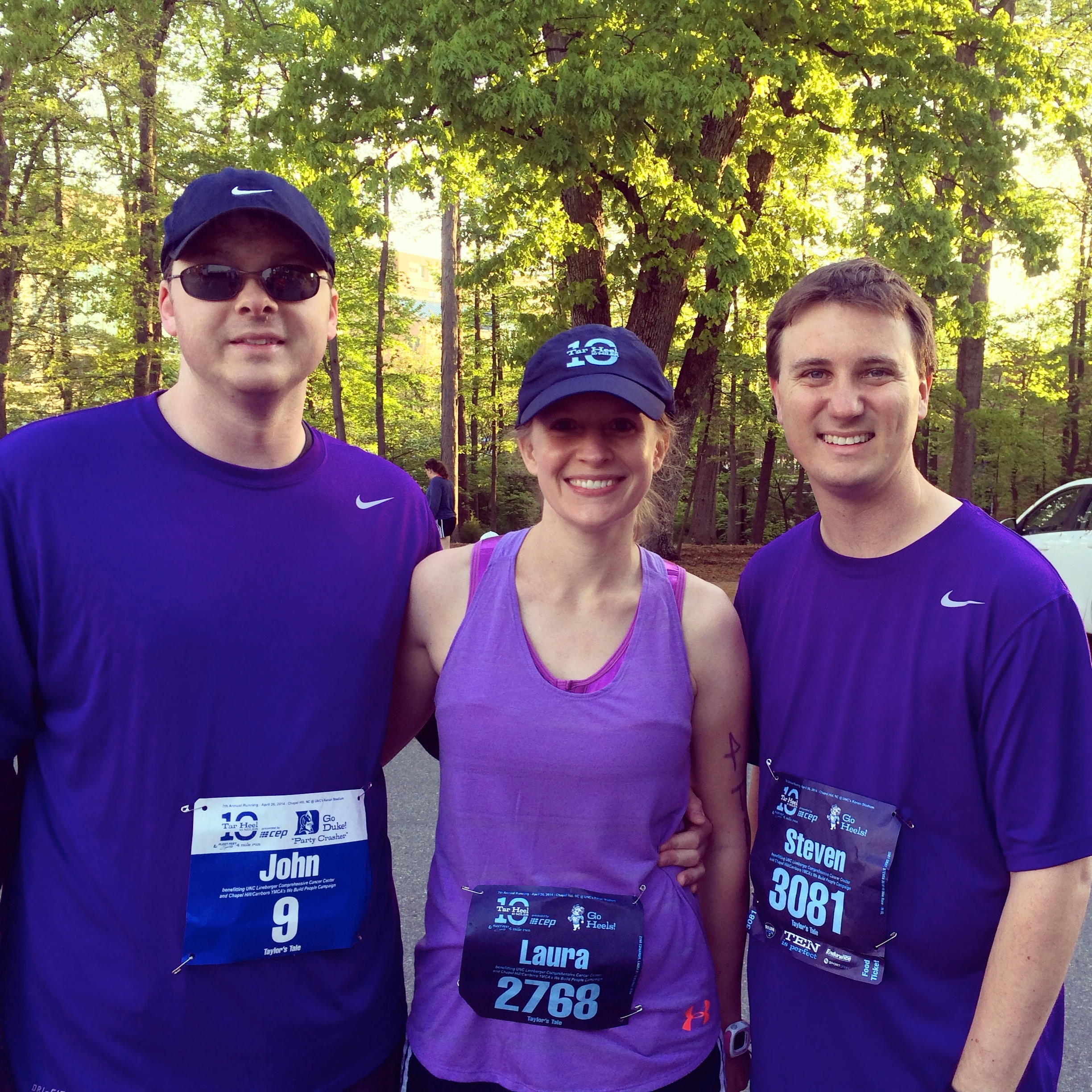
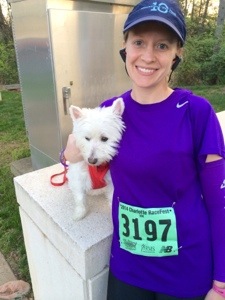 As I approached the last stretch and the finish line came into view, I knew I didn’t have a shot at a personal record (PR). I always sprint the final stretch. But when I reached down into that deep, passion-fueled place where I usually find my last burst of speed, I realized I didn’t have anything left. I talked myself through the last 100 yards, and I chugged across the finish line at 48:53, a 7:52/mile pace – 59 seconds slower than my 2013 time but still good for 10th place in my age group (and five seconds ahead of my “drafting buddy”).
As I approached the last stretch and the finish line came into view, I knew I didn’t have a shot at a personal record (PR). I always sprint the final stretch. But when I reached down into that deep, passion-fueled place where I usually find my last burst of speed, I realized I didn’t have anything left. I talked myself through the last 100 yards, and I chugged across the finish line at 48:53, a 7:52/mile pace – 59 seconds slower than my 2013 time but still good for 10th place in my age group (and five seconds ahead of my “drafting buddy”).